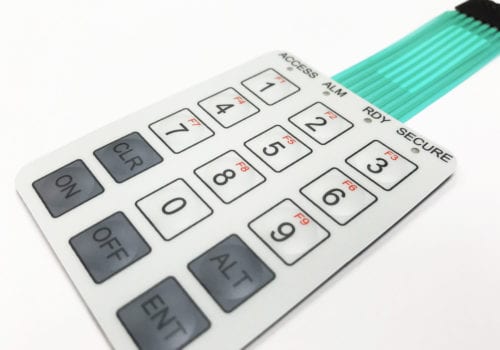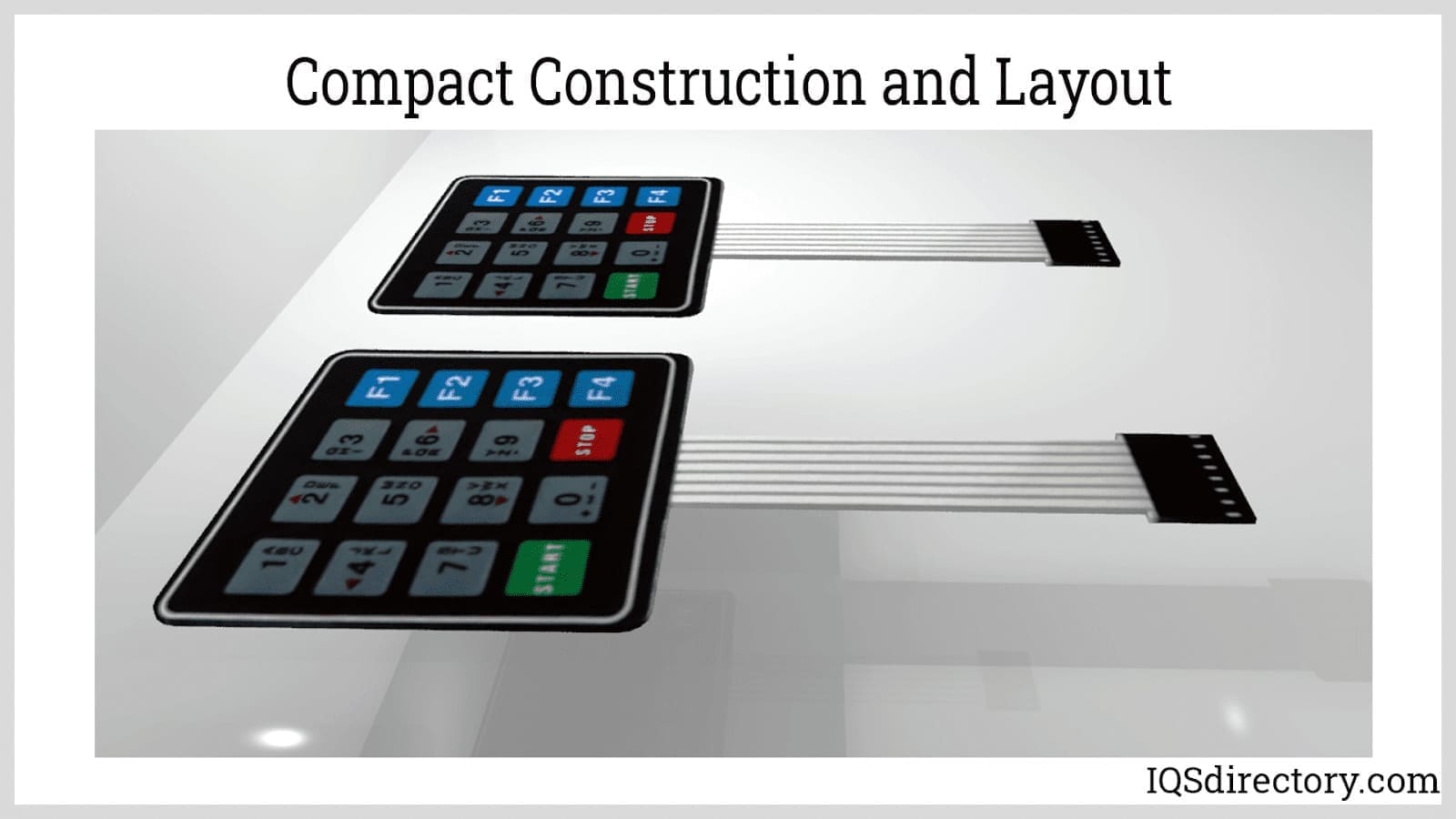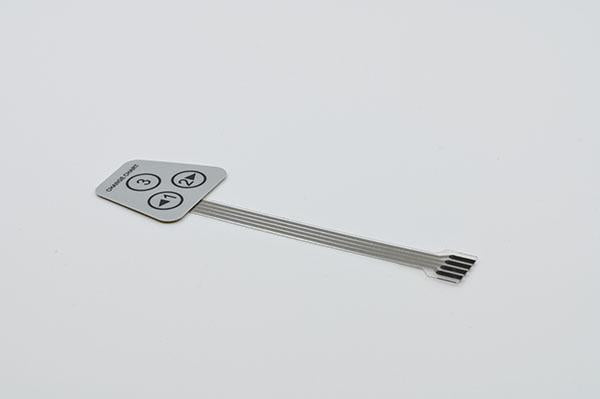Innovations in Membrane Switches for Touch-Sensitive Devices
Innovations in Membrane Switches for Touch-Sensitive Devices
Blog Article
Recognizing the Relevance of Membrane Switches in Customer User Interfaces
Membrane switches are essential elements in the layout of reliable interface, facilitating not just performance but additionally improving aesthetic charm and user communication. Their distinct features, such as resistance to personalized layouts and environmental factors, make them suitable for a diverse variety of applications throughout multiple sectors. As we explore the numerous benefits and future patterns related to Membrane innovation, it becomes clear that these switches are greater than simply elements; they stand for a merging of innovation and functionality. The ramifications of this technology on user experience are worth checking out even more.
What Are Membrane Switches?

The spacer layer, which contains glue properties, enables the splitting up of the circuit layer from the overlay, ensuring that the button remains in a non-activated state until pushed. When stress is put on the overlay, it presses the spacer layer, connecting the space and completing the circuit in the underlying layer. This design not just decreases the physical space required for conventional mechanical switches however also enhances the longevity of the gadget, as Membrane switches are generally immune to dust, dampness, and other environmental elements.
Typically located in applications ranging from consumer electronics to medical gadgets, Membrane buttons are indispensable to modern-day innovation, giving a easy to use and effective user interface that aligns with modern design needs.
Benefits of Membrane Buttons
While many button technologies exist, Membrane Switches deal unique advantages that make them specifically preferable in numerous applications. One of the main benefits of Membrane buttons is their small design, which permits space-saving executions in devices where realty is limited. Their slim profile not just enhances visual charm however additionally facilitates lightweight construction.
An additional significant benefit is their resistance to ecological factors. Membrane buttons are usually secured versus dampness, dust, and contaminants, making them perfect for usage popular settings, such as clinical gadgets and industrial equipment. This longevity expands the life expectancy of the button, reducing upkeep costs and improving dependability.
Furthermore, Membrane buttons can be customized to meet certain layout requirements, integrating unique graphics and shades that enhance user communication. Their responsive responses options can also be tailored to offer a rewarding user experience. Furthermore, Membrane switches are cost-efficient, especially in high-volume applications, as they can be generated effectively.
Applications in Numerous Industries

In the consumer electronic devices industry, Membrane switches prevail in tools such as microwaves, washing equipments, and push-button controls. Their responsive responses and visual choices enhance user experience while giving a smooth, contemporary appearance. Furthermore, auto click for info producers make use of Membrane buttons in control panel controls and infotainment systems, where room is restricted, and individual involvement is crucial.
Moreover, the industrial sector leverages Membrane switches in control panels for equipment and devices, enabling user-friendly operation in frequently harsh settings. Their resistance to chemicals and wetness makes sure durability and dependability in these applications. In general, the adaptability of Membrane Switches contributes considerably to their widespread usage, making them important in different technological domain names.
Style Considerations for Membrane Switches

When making Membrane switches, a number of vital factors to consider must be thought about to make certain ideal performance and user experience. The option of products is critical; picking sturdy, high-grade substratums can boost the button's long life and resistance to ecological variables such as dampness and temperature fluctuations.
Second of all, the design of the visuals overlay must prioritize quality and convenience of use. Symbols and text must be understandable, and the design must assist in instinctive communication (membrane switches). In addition, tactile responses is important; integrating a tactile dome or other mechanisms can boost the individual experience by giving physical confirmation of activation
Another essential variable is the switch's electric performance. Developers have to make certain that the conductive traces are properly developed to lessen resistance and avoid signal interference. This involves assessing the needed actuation force and guaranteeing compatibility with the electronic elements they will user interface with.

Future Fads in Membrane Innovation
As modern technology remains to development, Membrane buttons are positioned to evolve considerably, driven published here by technologies in materials and manufacturing techniques. One emerging pattern is the unification of advanced materials, such as versatile substratums and conductive inks, which enhance toughness and decrease the overall weight of Membrane switches. These products not just enhance the tactile feedback yet also permit the style of switches that can stand up to harsher environmental problems.
Additionally, he has a good point the integration of touch-sensitive technologies is changing typical Membrane Switches into more interactive interface. Capacitive touch sensors embedded within Membrane switch panels can provide an extra user-friendly and responsive customer experience, straightening with the expanding demand for smooth, modern layouts in consumer electronic devices.
Additionally, improvements in printing techniques, such as digital and 3D printing, enable rapid prototyping and modification of Membrane switches. This versatility enables producers to react faster to market needs and customer choices.
Finally, sustainability is ending up being a substantial emphasis, with makers exploring green products and processes. As these patterns unfold, the future of Membrane modern technology assures boosted capability, visual allure, and ecological responsibility, strengthening their role in sophisticated interface throughout different sectors.
Verdict
In verdict, Membrane Switches represent a crucial part in the style of individual interfaces, integrating performance with aesthetic flexibility. As innovations in technology continue, the evolution of Membrane switches is expected to further fine-tune individual interfaces, driving development and improving functionality in a progressively complex technological landscape.
Membrane switches are essential elements in the design of reliable individual interfaces, facilitating not just performance but likewise improving visual allure and customer communication.Membrane Switches serve as a crucial component in numerous user interfaces, assisting in a smooth communication between individuals and electronic gadgets.While many button innovations exist, Membrane Switches offer unique advantages that make them particularly desirable in various applications.Moreover, Membrane buttons can be customized to satisfy specific layout demands, incorporating unique graphics and colors that boost customer interaction.In conclusion, Membrane Switches represent a vital part in the layout of customer interfaces, integrating capability with aesthetic flexibility.
Report this page